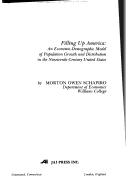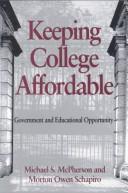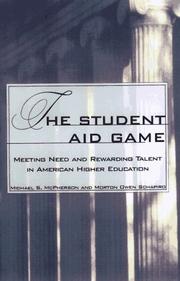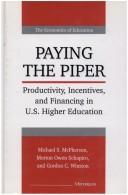| Listing 1 - 10 of 18 | << page >> |
Sort by
|

ISBN: 0892326751 Year: 1986 Publisher: Greenwich JAI
Abstract | Keywords | Export | Availability | Bookmark
 Loading...
Loading...Choose an application
- Reference Manager
- EndNote
- RefWorks (Direct export to RefWorks)
Fertility, Human --- Migration, Internal --- Rural population --- History --- History --- History --- United States --- United States --- United States --- Economic conditions --- Economic conditions --- Population --- History
Book
Abstract | Keywords | Export | Availability | Bookmark
 Loading...
Loading...Choose an application
- Reference Manager
- EndNote
- RefWorks (Direct export to RefWorks)
Book
ISBN: 9780691214931 9780691214917 Year: 2021 Publisher: Princeton, N.J. Princeton University Press
Abstract | Keywords | Export | Availability | Bookmark
 Loading...
Loading...Choose an application
- Reference Manager
- EndNote
- RefWorks (Direct export to RefWorks)
Book
ISBN: 9780691184418 Year: 2018 Publisher: Princeton, NJ
Abstract | Keywords | Export | Availability | Bookmark
 Loading...
Loading...Choose an application
- Reference Manager
- EndNote
- RefWorks (Direct export to RefWorks)
No detailed description available for "Cents and Sensibility".
Book
ISBN: 0691184410 Year: 2018 Publisher: Princeton, NJ : Princeton University Press,
Abstract | Keywords | Export | Availability | Bookmark
 Loading...
Loading...Choose an application
- Reference Manager
- EndNote
- RefWorks (Direct export to RefWorks)
In Cents and Sensibility, an eminent literary critic and a leading economist make the case that the humanities-especially the study of literature-offer economists ways to make their models more realistic, their predictions more accurate, and their policies more effective and just. Arguing that Adam Smith's heirs include Austen, Chekhov, and Tolstoy as much as Keynes and Friedman, Gary Saul Morson and Morton Schapiro trace the connection between Adam Smith's great classic, The Wealth of Nations, and his less celebrated book on ethics, The Theory of Moral Sentiments. The authors contend that a few decades later, Jane Austen invented her groundbreaking method of novelistic narration in order to give life to the empathy that Smith believed essential to humanity. More than anyone, the great writers can offer economists something they need-a richer appreciation of behavior, ethics, culture, and narrative. Original, provocative, and inspiring, Cents and Sensibility demonstrates the benefits of a dialogue between economics and the humanities and also shows how looking at real-world problems can revitalize the study of literature itself. Featuring a new preface, this book brings economics back to its place in the human conversation.

ISBN: 0815756410 0815756429 Year: 1991 Publisher: Washington, D.C. : Brookings Institution,
Abstract | Keywords | Export | Availability | Bookmark
 Loading...
Loading...Choose an application
- Reference Manager
- EndNote
- RefWorks (Direct export to RefWorks)
Higher education --- United States --- College attendance --- Federal aid to higher education --- Student aid --- Universités --- Aide de l'Etat à l'enseignement supérieur --- Etudiants --- Statistics --- Inscriptions --- Statistiques --- Aide financière --- Universités --- Aide de l'Etat à l'enseignement supérieur --- Aide financière --- United States of America

ISBN: 0691057834 0691230919 Year: 1999 Publisher: Princeton, NJ : Princeton Univ. Press,
Abstract | Keywords | Export | Availability | Bookmark
 Loading...
Loading...Choose an application
- Reference Manager
- EndNote
- RefWorks (Direct export to RefWorks)
Student aid in higher education has recently become a hot-button issue. Parents trying to pay for their children's education, college administrators competing for students, and even President Bill Clinton, whose recently proposed tax breaks for college would change sharply the federal government's financial commitment to higher education, have staked a claim in its resolution. In The Student Aid Game, Michael McPherson and Morton Owen Schapiro explain how both colleges and governments are struggling to cope with a rapidly changing marketplace, and show how sound policies can help preserve the strengths and remedy some emerging weaknesses of American higher education. McPherson and Schapiro offer a detailed look at how undergraduate education is financed in the United States, highlighting differences across sectors and for students of differing family backgrounds. They review the implications of recent financing trends for access to and choice of undergraduate college and gauge the implications of these national trends for the future of college opportunity. The authors examine how student aid fits into college budgets, how aid and pricing decisions are shaped by government higher education policies, and how competition has radically reshaped the way colleges think about the strategic role of student aid. Of particular interest is the issue of merit aid. McPherson and Schapiro consider the attractions and pitfalls of merit aid from the viewpoint of students, institutions, and society. The Student Aid Game concludes with an examination of policy options for both government and individual institutions. McPherson and Schapiro argue that the federal government needs to keep its attention focused on providing access to college for needy students, while colleges themselves need to constrain their search for strategic advantage by sticking to aid and admission policies they are willing to articulate and defend publicly.
Student aid --- College students --- Education, Higher --- Etudiants --- Enseignement supérieur --- Scholarships, fellowships, etc. --- Finance. --- Aide financière --- Finances --- EDUCATION / Higher. --- Admit-deny. --- American Freshman Survey. --- Amherst College. --- Bowdoin College. --- Breneman, David. --- Campus-based programs. --- Clinton, Bill. --- Dartmouth College. --- Differential packaging. --- Direct Loan Program. --- Earnings gaps. --- Equal opportunity issues. --- Federal Perkins Loan program. --- Federal Work-Study (FWS) program. --- Gapping. --- Gender differences, merit aid and. --- Harvard College. --- Honors Scholarship program. --- Johnson, Lyndon. --- Kane, Tom. --- Loans. --- Meiszkowski, Peter. --- Merit aid. --- Middle-income melt. --- National policies, role of. --- Need-aware second review. --- Needs analysis system. --- Nixon, Richard. --- PLUS program. --- Pell grants. --- Revenue sources, changes in. --- Sauvageau, Yvon. --- Stafford loans. --- State and local government aid. --- Stecklow, Steve. --- Tax credits or tax deductions, for tuition. --- University of Vermont. --- Upper-income students, college selection by. --- Wellstone, Paul. --- Wesleyan College. --- Winston, Gordon. --- Work programs. --- Aid, Student --- Financial aid, Student --- Financial aid to students --- Student financial aid --- Student financial assistance --- Education --- College life --- Universities and colleges --- University students --- Students --- Finance
Digital
Year: 2010 Publisher: Cambridge, Mass National Bureau of Economic Research
Abstract | Keywords | Export | Availability | Bookmark
 Loading...
Loading...Choose an application
- Reference Manager
- EndNote
- RefWorks (Direct export to RefWorks)
The college choice process can be reduced to three questions: 1)Where does a student apply? 2)Which schools accept the students? 3)Which offer of admission does the student accept? This paper addresses question three. Specifically, we offer an econometric analysis of the matriculation decisions made by students accepted to Williams College, one of the nation's most highly selective colleges and universities. We use data for the Williams classes of 2008 through 2012 to estimate a yield model. We find that—conditional on the student applying to and being accepted by Williams—applicant quality as measured by standardized tests, high school GPA and the like, the net price a particular student faces (the sticker price minus institutional financial aid), the applicant's race and geographic origin, plus the student's artistic, athletic and academic interests, are strong predictors of whether or not the student will matriculate.
Digital
Year: 2011 Publisher: Cambridge, Mass. National Bureau of Economic Research
Abstract | Keywords | Export | Availability | Bookmark
 Loading...
Loading...Choose an application
- Reference Manager
- EndNote
- RefWorks (Direct export to RefWorks)
In this paper we utilize data on the head-to-head loss rate for students accepted at Williams College, but who opt to enroll elsewhere. For example, we employ data that measure the fraction of students admitted to Williams and to Amherst (or Harvard or Yale, etc.) but who opt to attend Amherst (or Harvard or Yale, etc.) instead of Williams. We then model this head-to-head loss rate using data from a variety of sources. A better understanding of the head-to-head loss rate can assist an institution in the competition for high quality students. Importantly, it can also shed light on the degree to which some part of the loss rate might be due to “intangible” differences between the schools being compared. These intangibles (positive or negative) might grant a school greater success (or failure) in the market for students than an objective accounting of its characteristics might suggest. Such an advantage (or disadvantage) is closely aligned with the business concept of “goodwill.” We present preliminary evidence on how a quantitative measure of educational goodwill can be computed.

ISBN: 0472104047 9780472104048 Year: 1993 Publisher: Ann Arbor (Mich.): University of Michigan press,
Abstract | Keywords | Export | Availability | Bookmark
 Loading...
Loading...Choose an application
- Reference Manager
- EndNote
- RefWorks (Direct export to RefWorks)
Education, Higher --- Student aid --- Universities and colleges --- Enseignement supérieur --- Etudiants --- Universités --- Finance --- Administration --- Finances --- Aide financière --- Enseignement supérieur --- Universités --- Aide financière --- Education, Higher - Finance - United States --- Student aid - United States --- Universities and colleges - Administration - United States
| Listing 1 - 10 of 18 | << page >> |
Sort by
|

 Search
Search Feedback
Feedback About UniCat
About UniCat  Help
Help News
News